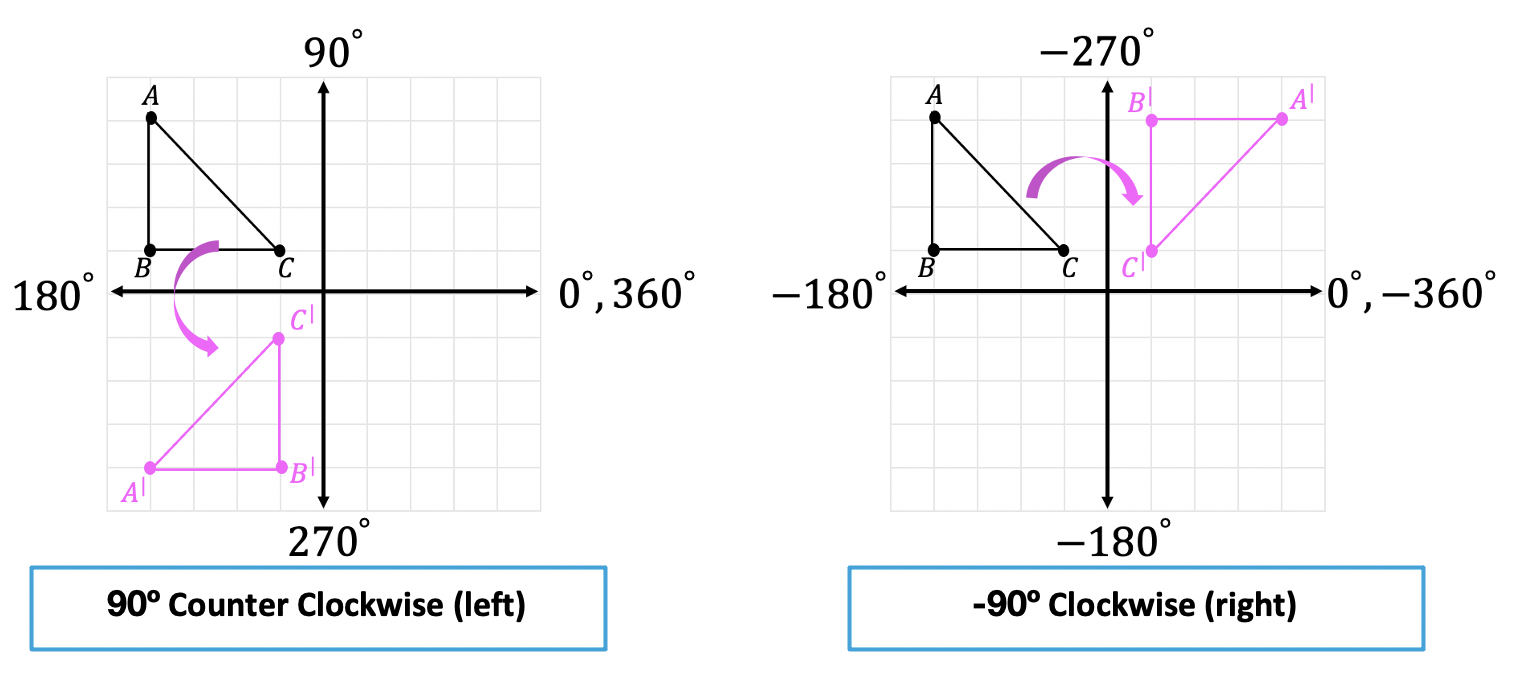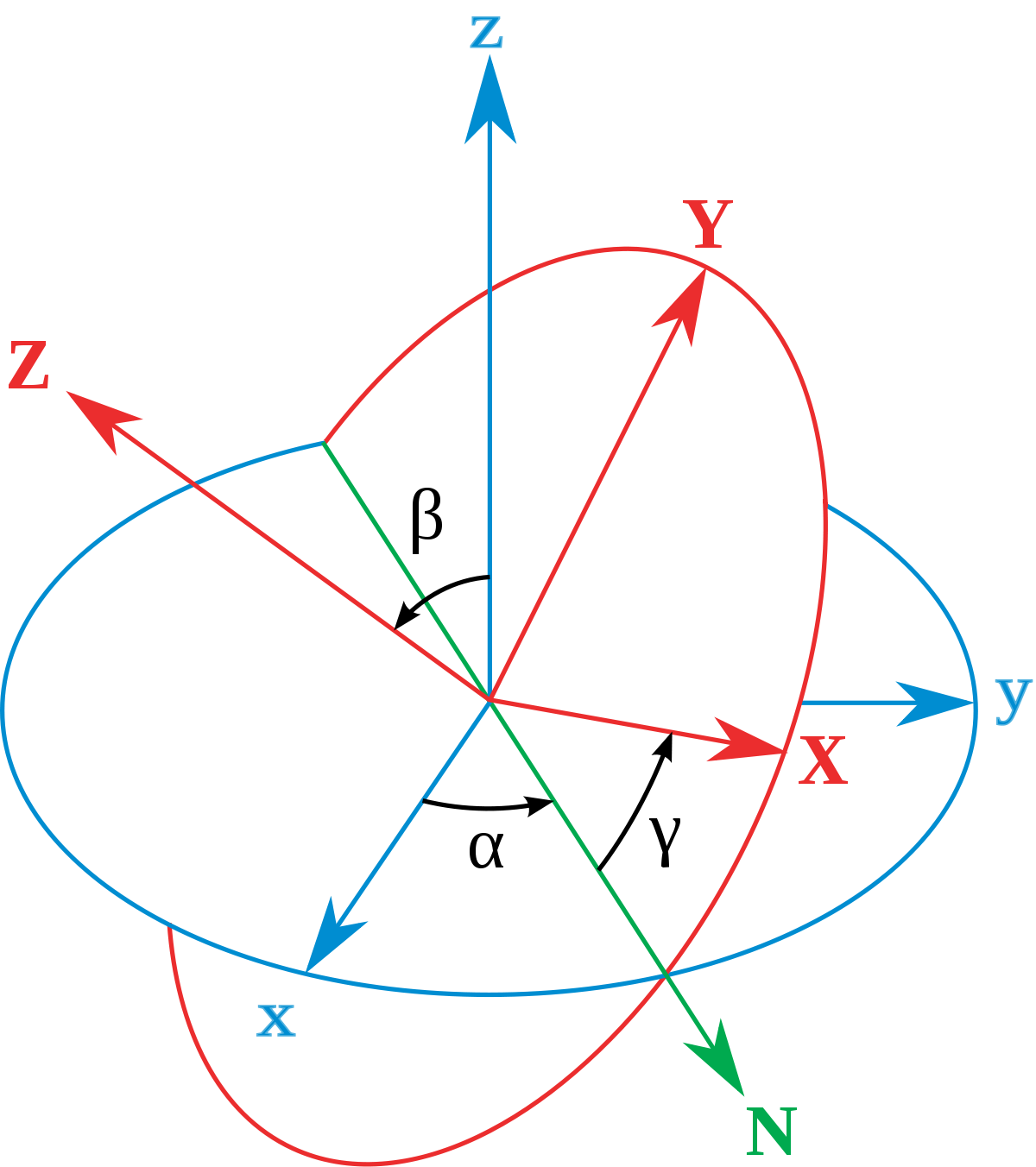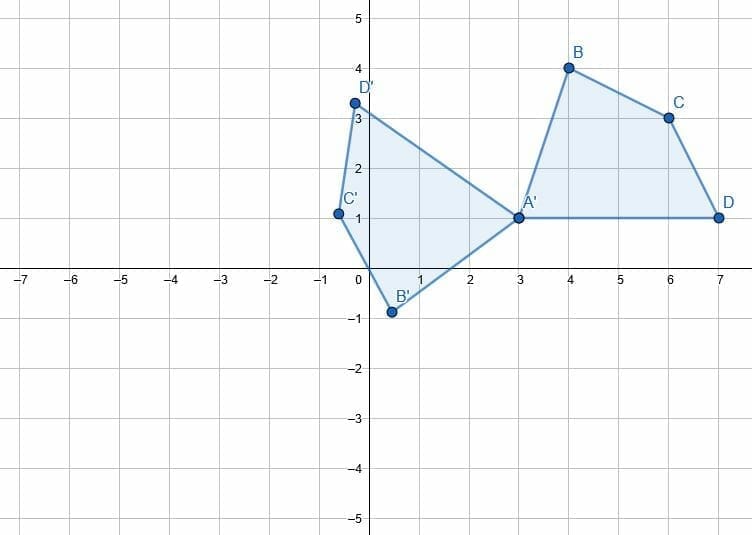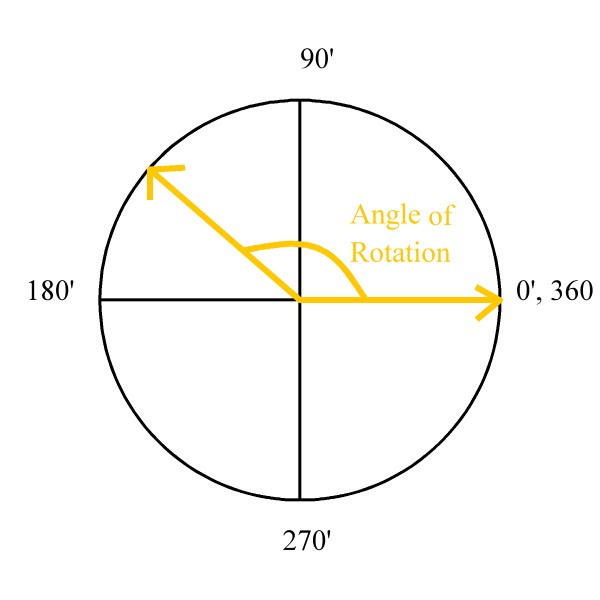
Angles of Rotation in Standard Positions ( Read ) Trigonometry CK12 Foundation
The unknown revolution angle is the difference between 360 degrees and 50 degrees, or 310 degrees. What is a meaning of revolution? A revolution is a complete, full rotation. A revolution.

What are Right angle and straight angle? (in terms of revolution)
The revolution is a unit of measurement of angle. A revolution is a unit of plane angle, and defined as a complete turn around a circle. The revolution is equal to 360° or 2×π. What is angle Instant conversions Conversion tables Rate conversions. 1 rev = 21 600 MOA rev>MOA MOA>rev What is MOA.

Rotations about a Point Geometry Math Lessons
The full circle or full turn or cycle or rotation or revolution uses k = 1/2pi, making the angle of 1 full circle = 2pi rad = 4 right angles = 400 gon = 360°. Sample conversions: revolution revolution to 1/16 circle revolution to full circle revolution to 1/2 circle revolution to point revolution to arcminute revolution to milliradian

Label Rotation in QGIS and ArcGIS — open.gis.lab
The London-based Tower Publishing Company quickly secured the book rights to The Angel of the Revolution, publishing an abridged hardcover edition in October 1893. [4] : 192 [6] : 303 The book version was likewise a success, receiving rave reviews and becoming a bestseller ; it was printed in at least eleven editions, and a review in The Pelican declared Griffith to be "a second Jules Verne".

Angles of Revolution 1 VividMath — US
In short: Let there be a right-angled triangle ABC with hypotenuse AB. Let the triangle revolve around the BC side. I would like to ask for your help to determine the angle of revolution using a revolved triangle (ABCr) with known angles (Ar, Br and Cr = C = 90°) and known lengths (ABr, BCr = BC, and ACr).(illustration of triangle and axis of revolution)

Rotations CK12 Foundation
You can define the angle of revolution by selecting one of the following angle options: Variable —Revolves a section from the sketching plane by the specified angle value. Type the angle value in the box, or select one of the predefined angles (90, 180, 270, 360). Symmetric —Revolves a section on each side of the sketching plane by half of.

PPT Angles of Rotation PowerPoint Presentation, free download ID2634960
The conversion from radians to revolutions involves dividing the given angle in radians by 2π. This conversion factor arises from the fact that one revolution is equal to a full rotation around a circle, which corresponds to an angle of 2π radians. Dividing by 2π allows us to determine the number of complete revolutions within the given angle.

A rotation in the origin is shown. The angle of rotation appears to be A) 30°. B) 45°. C) 60
revolutions = (500° ÷ 360) = 1.388889 r Degrees and revolutions are both units used to measure angle. Keep reading to learn more about each unit of measure. What Is a Degree? A degree is a measure of angle equal to 1/360th of a revolution, or circle. [1] The number 360 has 24 divisors, making it a fairly easy number to work with.

Euler angles Wikipedia
Definition of Revolution more. A 360° angle, a full rotation, a complete turn so it points back the same way. Example: "Revolutions Per Minute" (or "RPM") means how many complete turns occur every minute. Try it here: Illustrated definition of Revolution: A 360deg angle, a full rotation, a complete turn so it points back the same way.

Rotation in Geometry Explanation and Examples
It is the EQUAL angle value of 1 revolution but in the degrees angle unit alternative. Conversion chart - revolutions to degrees 1 revolution to degrees = 360.00 ° 2 revolutions to degrees = 720.00 ° 3 revolutions to degrees = 1,080.00 ° 4 revolutions to degrees = 1,440.00 ° 5 revolutions to degrees = 1,800.00 °

PPT Angle Measurements PowerPoint Presentation, free download ID6060386
Angles of Revolution: Value of x Description In this activity, students are asked to calculate the size of one unknown angle that forms an angle of revolution with two or three known angles. Unknown angles are represented by pronumerals. Teaching Hints Remind students that angles forming a n angle of revolution add to 360 °. Activities

PPT Angles of Rotation PowerPoint Presentation, free download ID2634960
If an angle of one radian intercepts an arc of length r, then a central angle of 2Π radians would intercept an arc of length 2Πr, which is the circumference of the circle. Such a central angle has a measure of one revolution. Therefore, 1 rev = 360 o = 2Π rad. Also, 1 rad = o = rev. Conversion between Revolutions, Degrees, and Radians

Angles of Revolution YouTube
NSW Stage 4 Syllabus Outline. Syllabus. Explanation. Demonstrate that the angle sum of a triangle is 180 o and use this to find the angle sum of a quadrilateral (ACMMG166) This means that you will know how to identify and figure out angle sizes in supplementary angles. Establish properties of quadrilaterals using congruent triangles and angle.

Unit Circle (Negative and Multiple Revolution Angles) Part 1 YouTube
Description In this activity, students are asked to calculate the size of one unknown angle that forms an angle of revolution with two or three angles known angles that form an angle of revolution. Algebraic terms are not used in this activity. Teaching Hints Remind students that angles forming an angle of revolution add to 360°. Activities Easy

A Math Dictionary for K6 Geometric Terms
Revolutions We seldom learn to use the simplest, most natural unit of measure for geometric angles, the revolution (rev). Other names for this unit are full circle, turn, full turn, and rotation (rot). These are all good names and they all mean the same thing. 1 full circle = 1 rev = 1 turn = 1 rot = 360° Degrees

PPT Angles and Radian Measure PowerPoint Presentation, free download ID4004379
Negative angles and angles greater than a full revolution are more awkward to work with than those in the range of 0° to 360°, or 0 to \(2π\). It would be convenient to replace those out-of-range angles with a corresponding angle within the range of a single revolution.